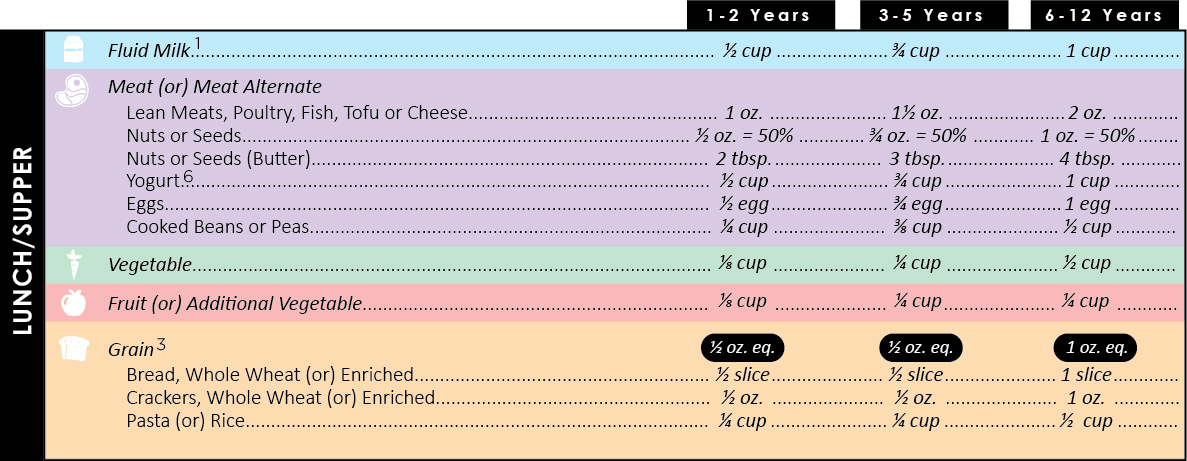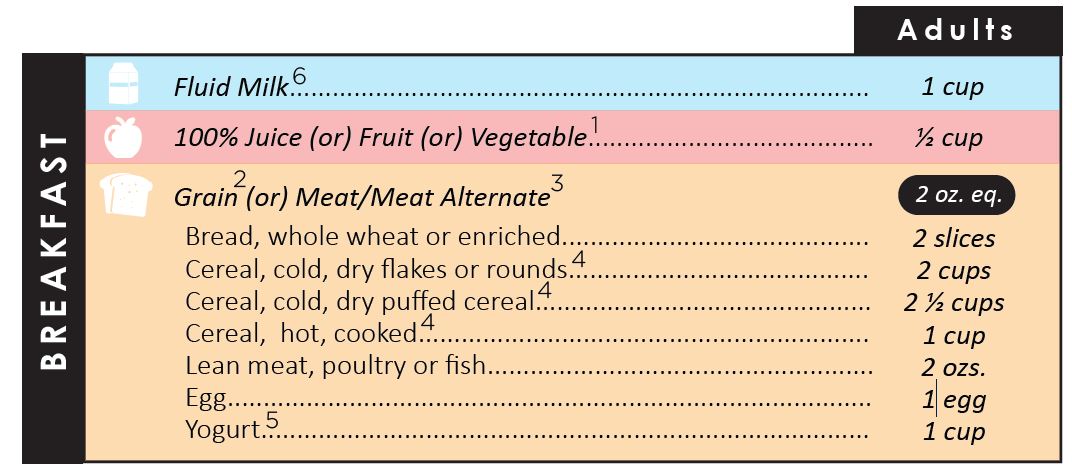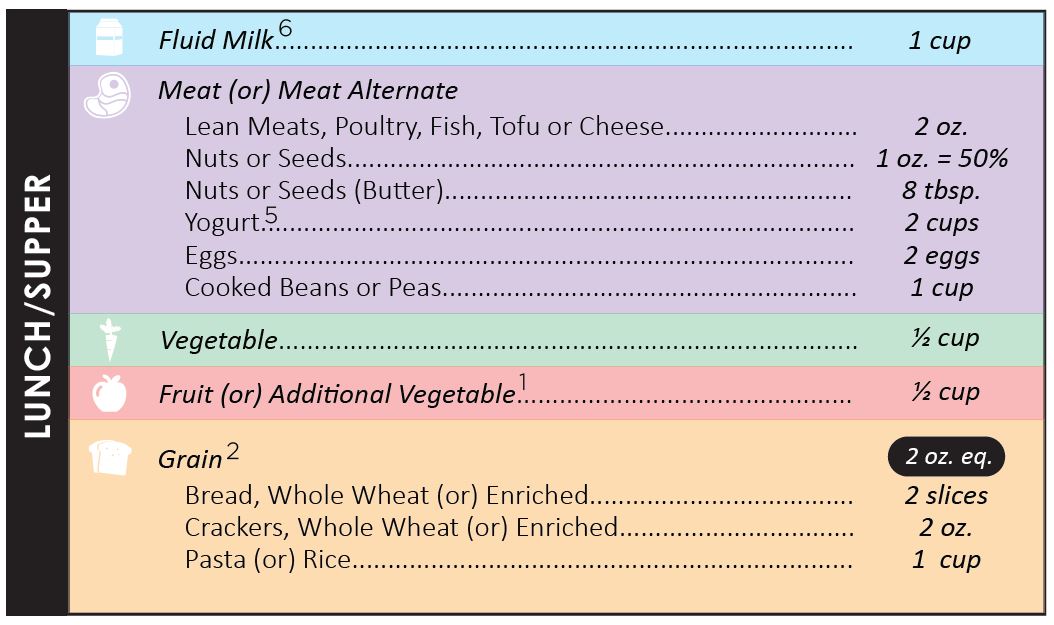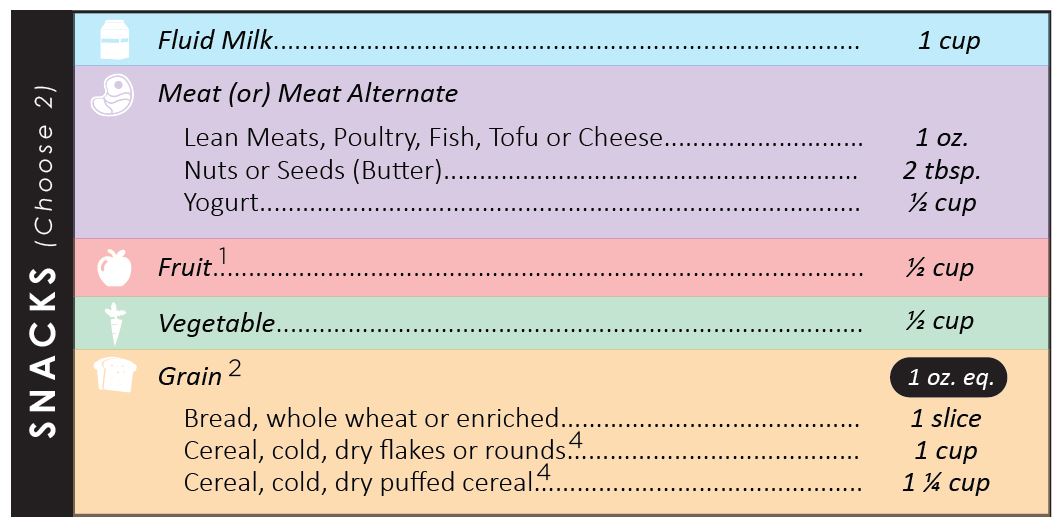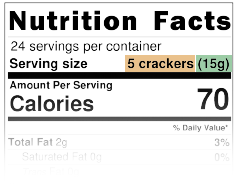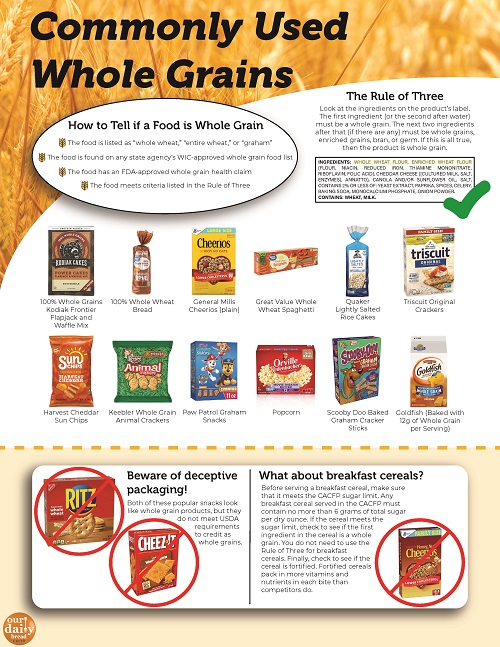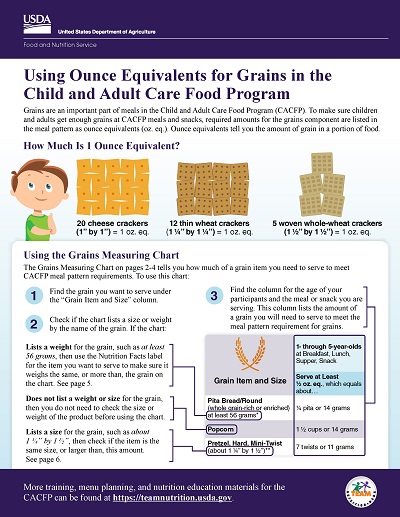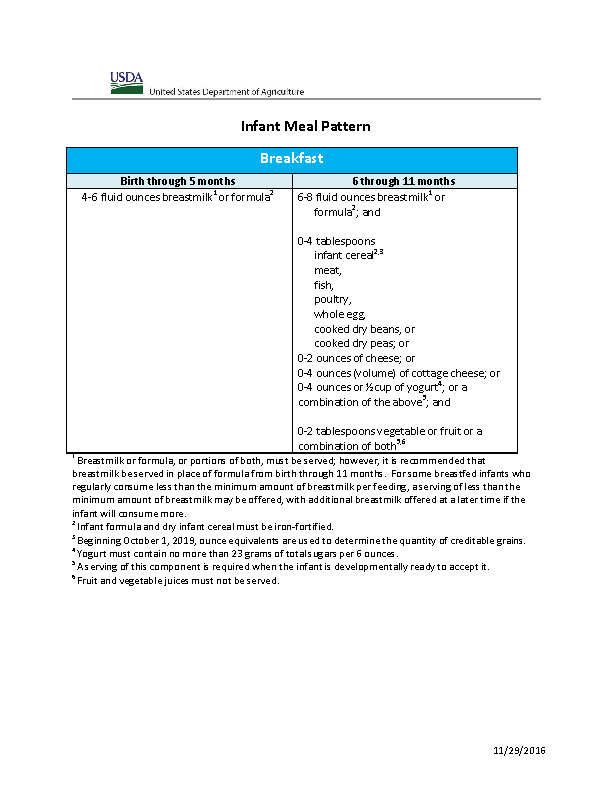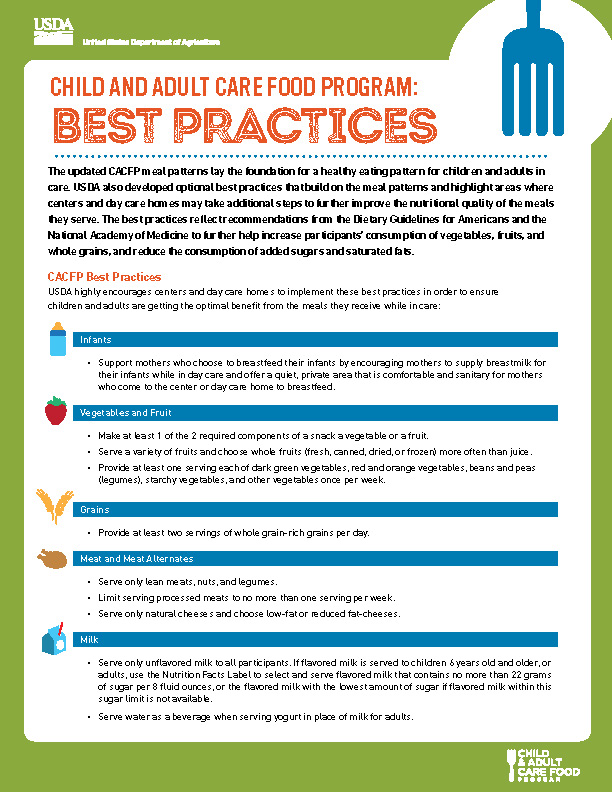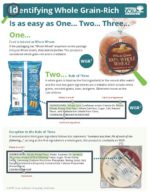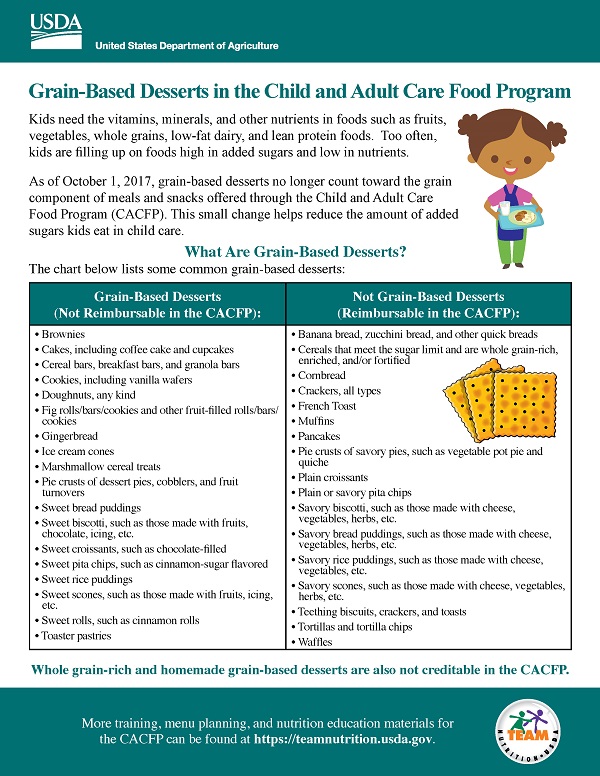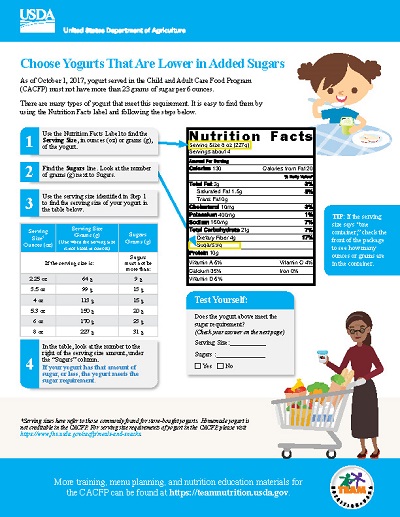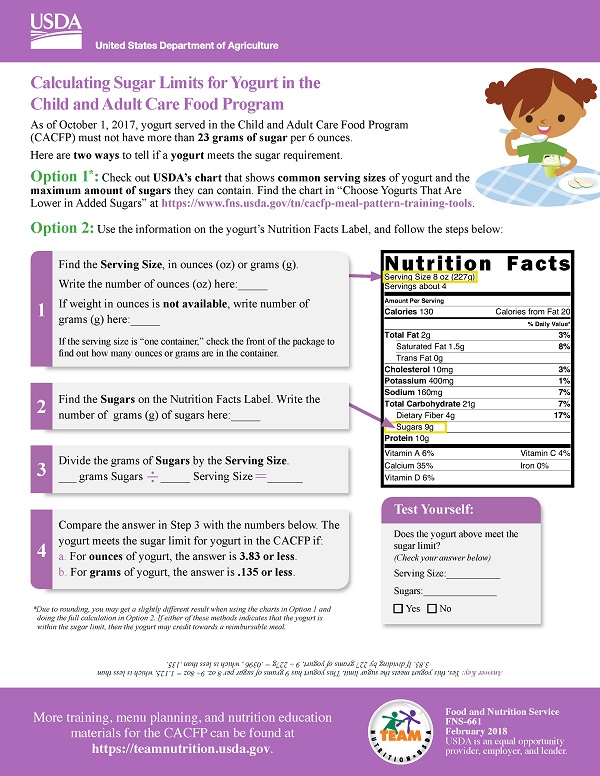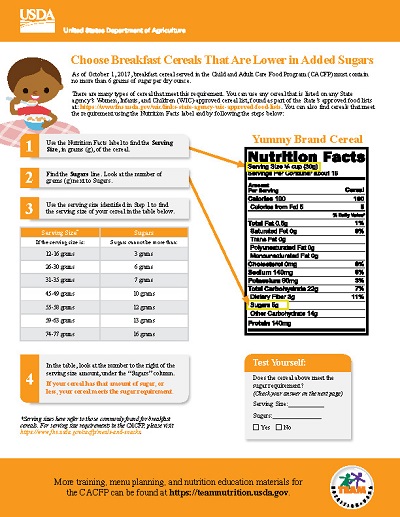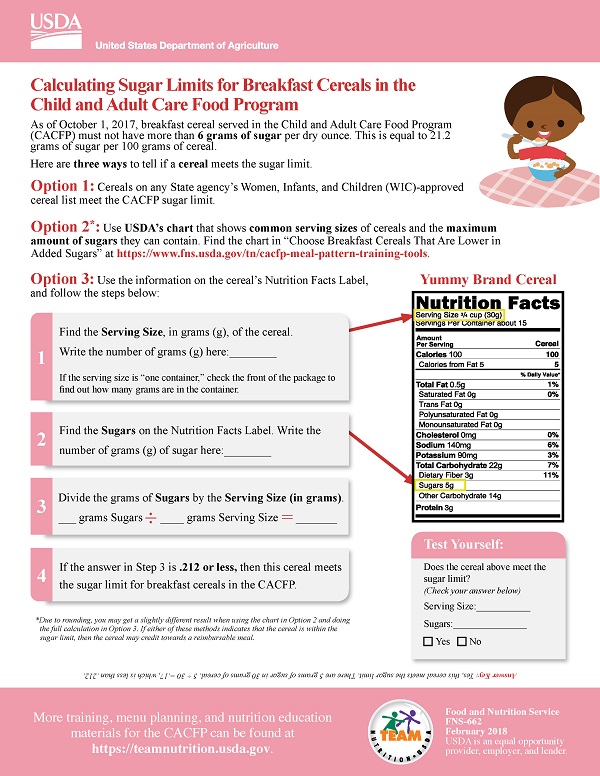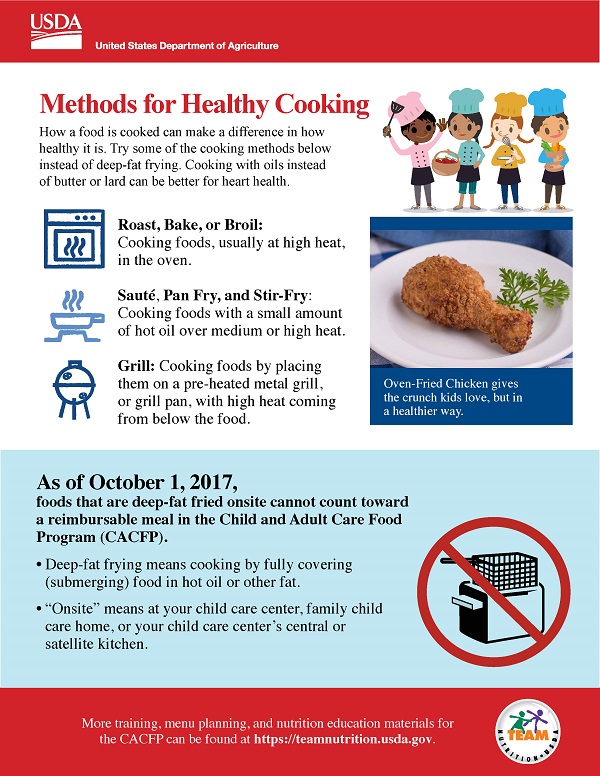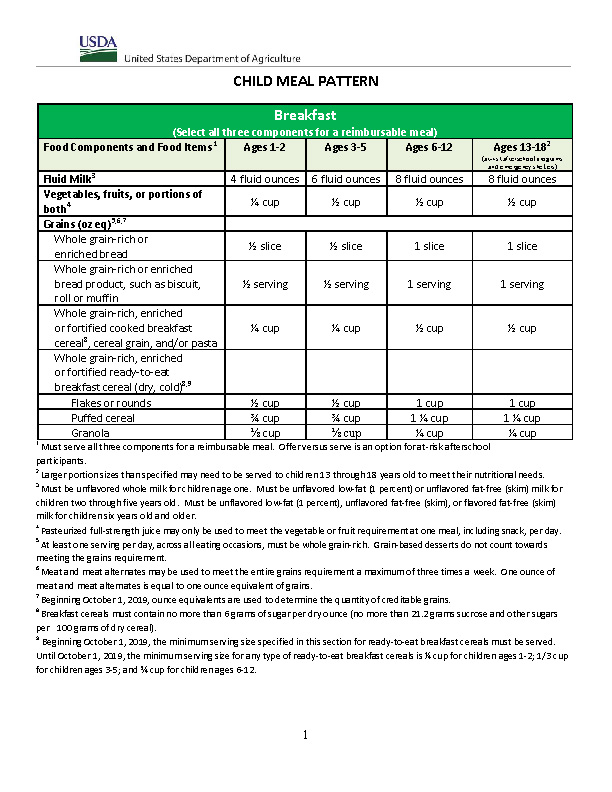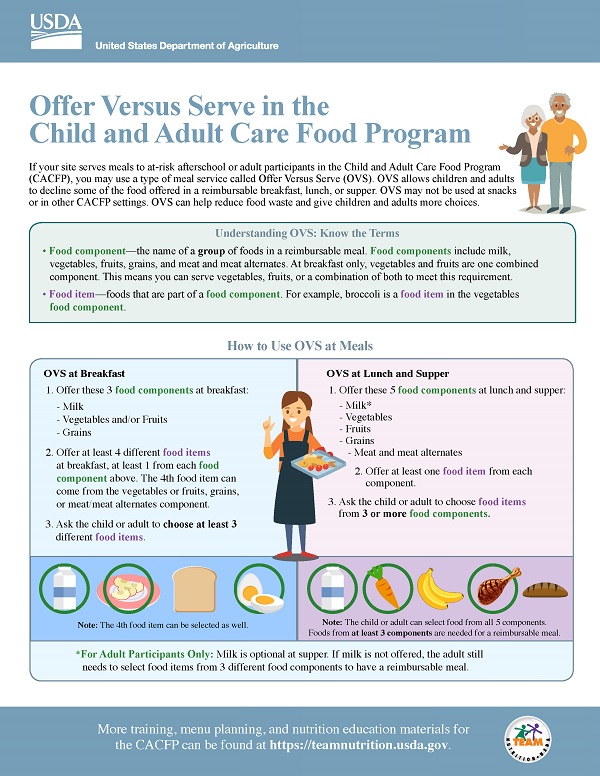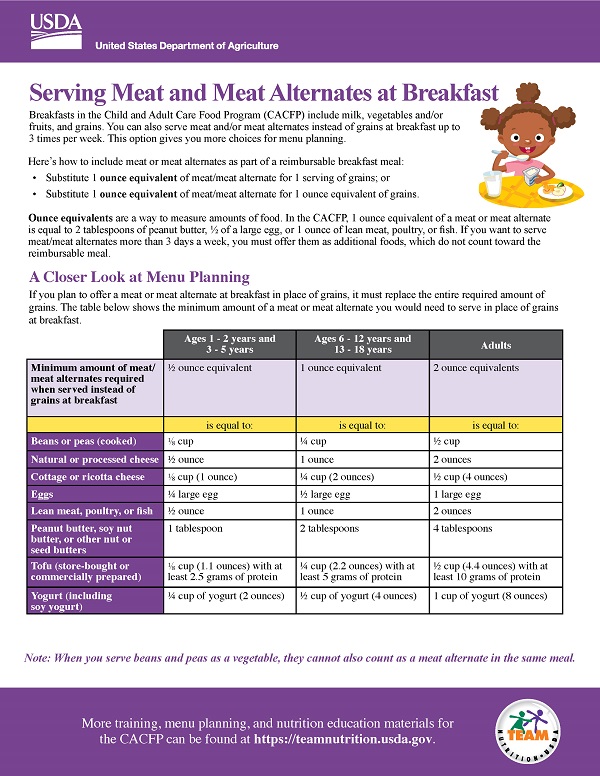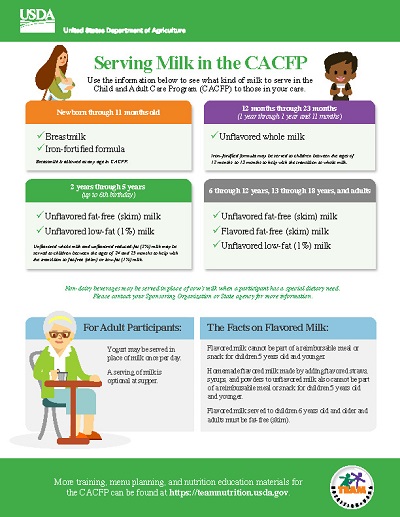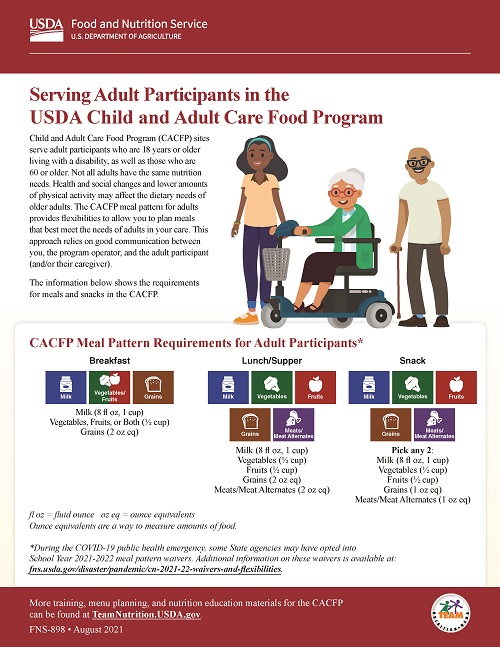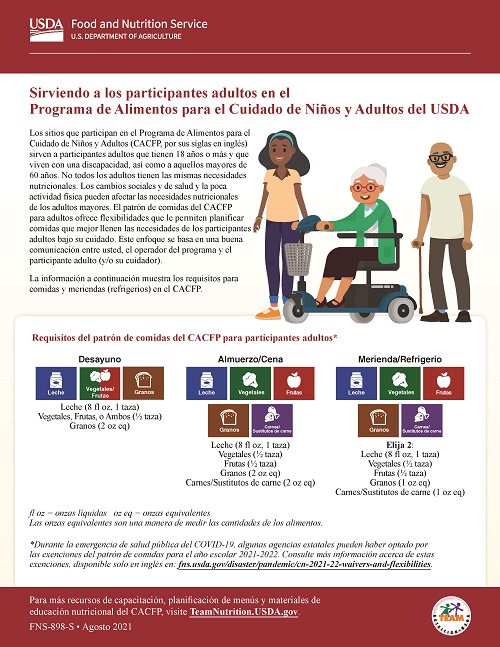USDA recently revised the CACFP meal patterns to ensure children and infants have access to healthy, balanced meals throughout the day. Under the updated child and adult meal patterns, meals served will include a greater variety of vegetables and fruit, more whole grains, and less added sugar and saturated fat. The changes to the infant meal pattern support breastfeeding and the consumption of vegetables and fruit without added sugars.
Our Daily Bread CACFP is here to assist you during the transition to the new meal pattern requirements! With the help of the USDA, TeamNutrition and the National CACFP Sponsors Association, we have created the following resources to help you better understand the meal pattern and how to best implement them at your child care site.



